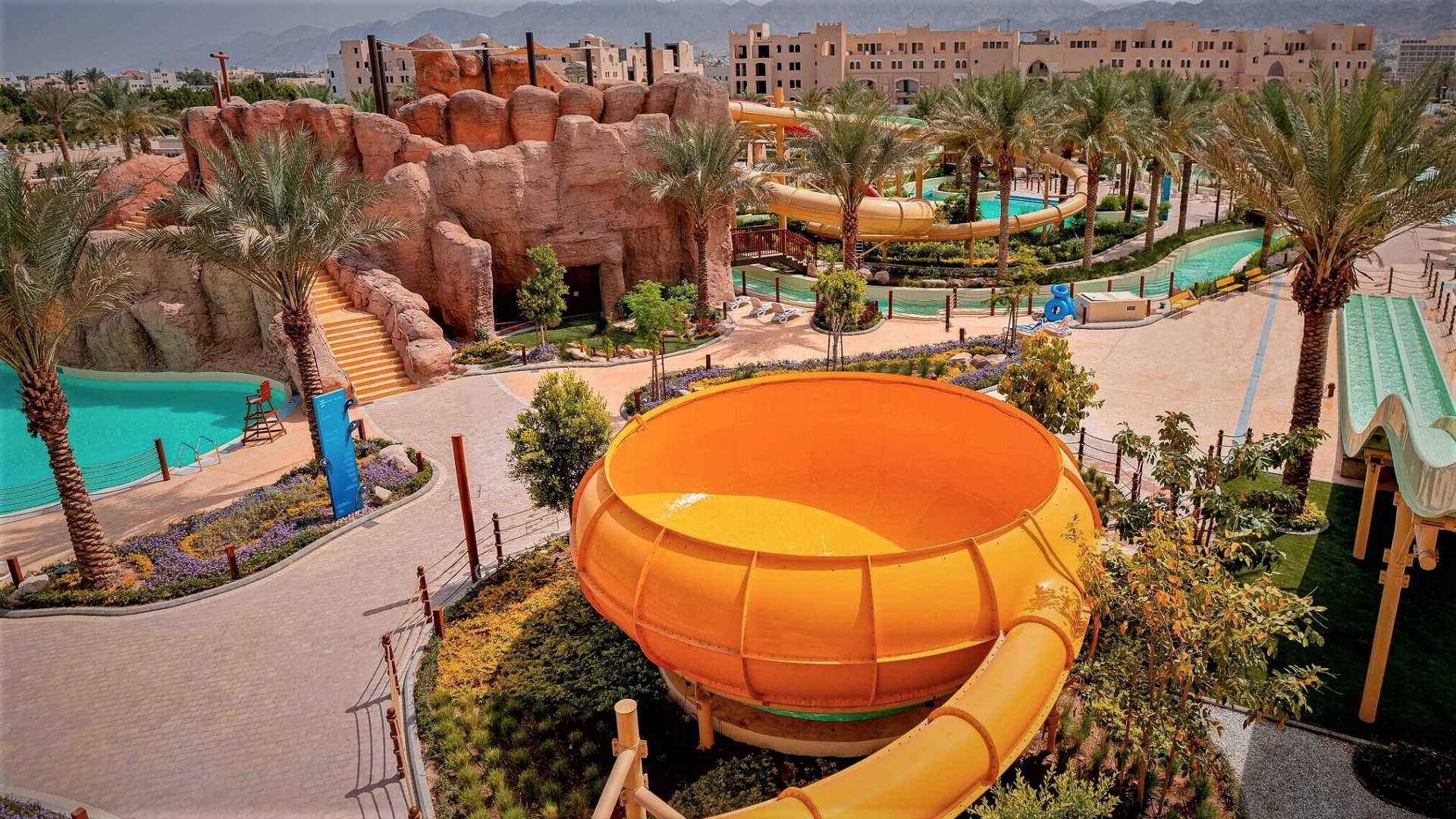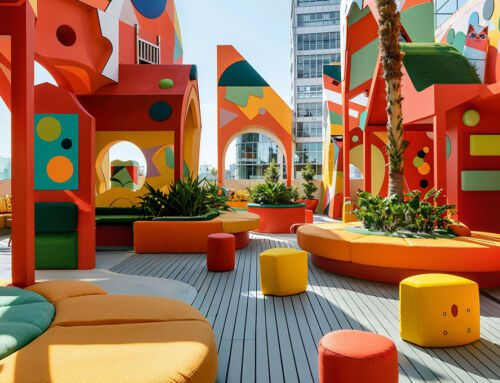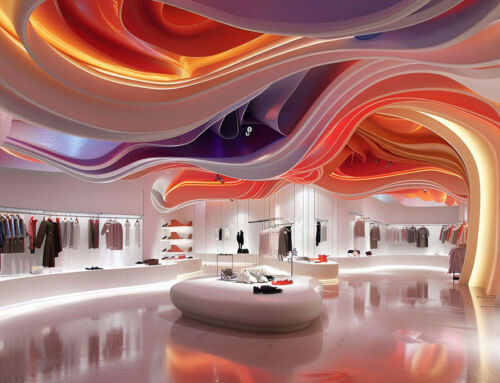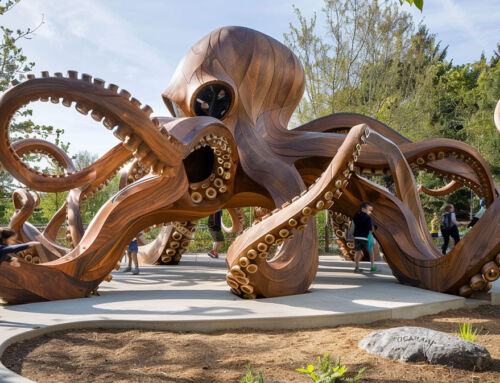Waterparks have very clear requirements in terms of the specifications of their outdoor flooring:
-They must be economical due to the large surfaces to be covered.
-They must be sufficiently resistant to the passage of maintenance vehicles.
-They must be hygienic, washable with pressurised water, as they are used by the public with open footwear or barefoot.
-For the same reason, they must be non-slip, whilst also being comfortable for the feet.
-They must have a high solar reflection index, so as not to burn the feet, but without being reflective or dazzling.
-They must be resistant to the chemicals present in swimming pool water.
-They must facilitate water drainage (with slopes, drains, etc.).
-Finally, they must be able to be made with complex shapes, colour changes, etc.
In accordance with these requirements, the most classic finishes, in ascending order of price, are:
Brushed cement
This is the simplest and cheapest. It is not usually used because of its basic appearance. It is also a little less durable than the others, as it does not have a hardening finish and because of the scraping of its surface.
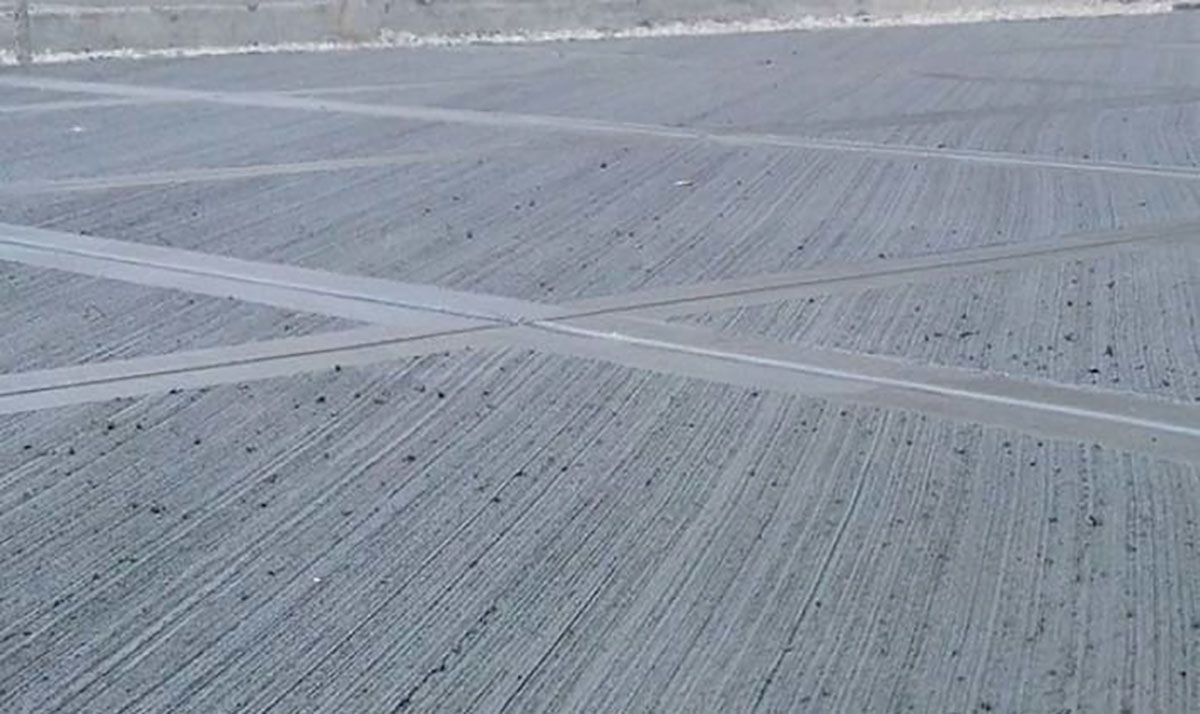
Paving stone
It is economical and durable and has a classic look. It offers many possibilities for design and allows for repairs. For its correct installation in water parks, it is necessary to confine it with a perimeter border. It can be used to mark general routes for vehicles. Otherwise, it is less recommended in wet areas and around swimming pools.
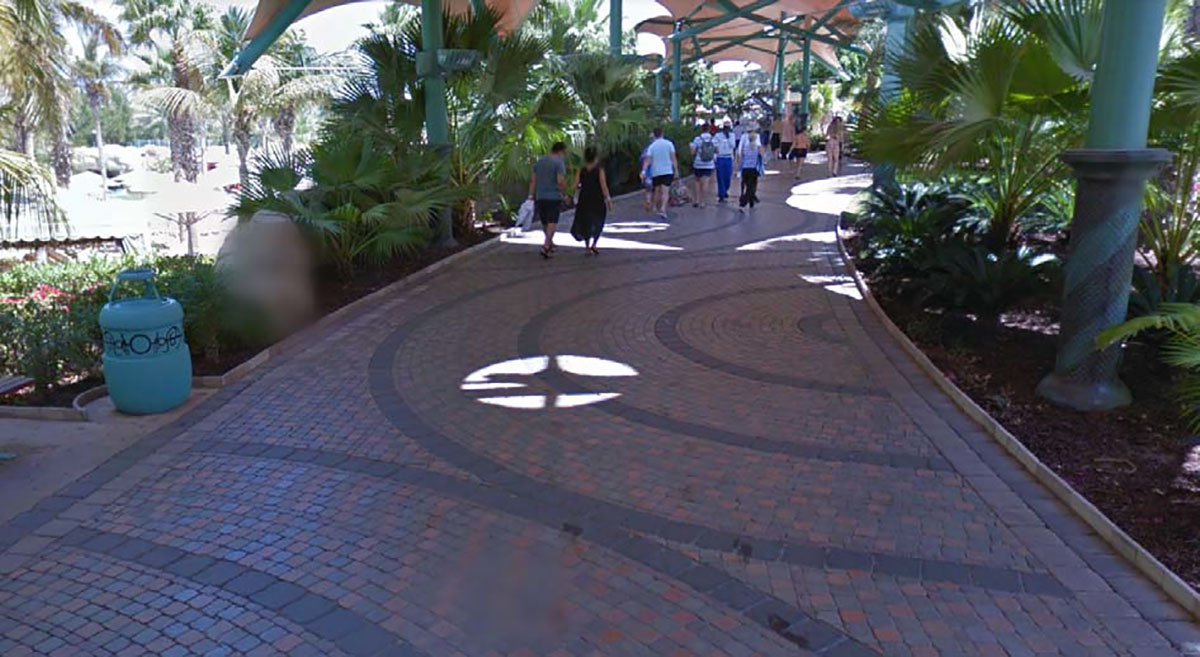
Cement with exposed aggregate
It is necessary to control the particle size and shape of the exposed aggregate. It is slightly more economical than the following, printed concrete.
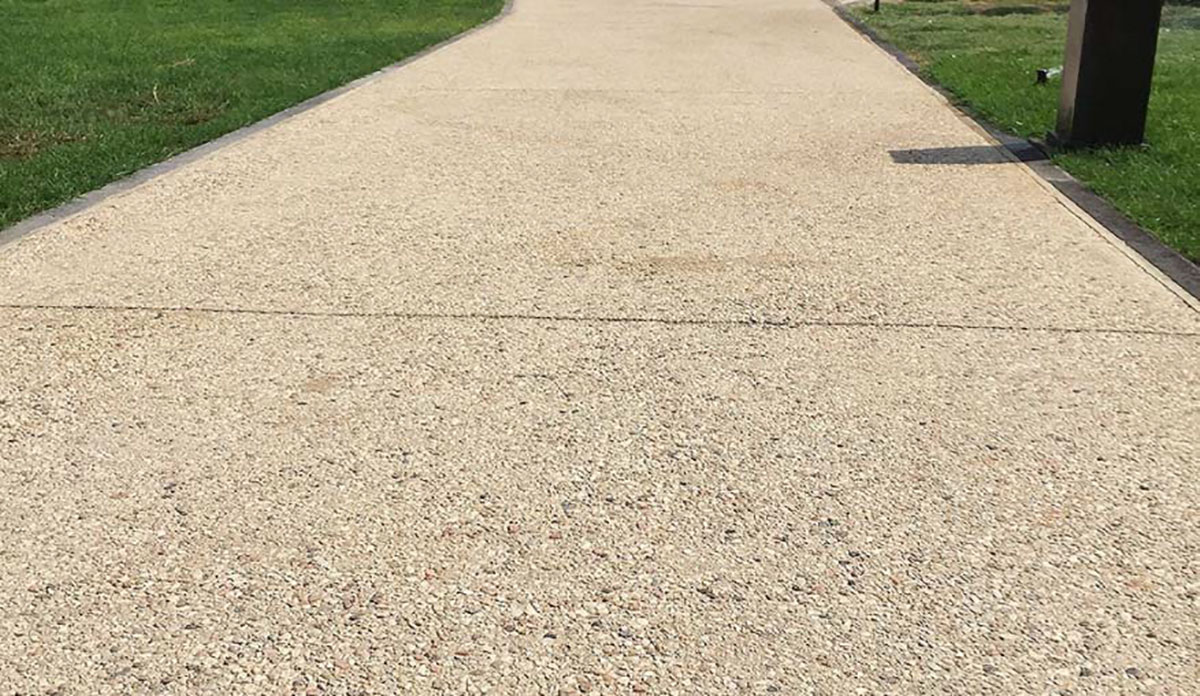
Printed concrete
It is flooring that easily adapts to the shapes and slopes of water parks. There is a somewhat limited range of colours. It is a locally available material. However, it requires experienced execution. Finally, it can be themed thanks to the numerous types of textures available (wood, sand, cobblestones, etc.).
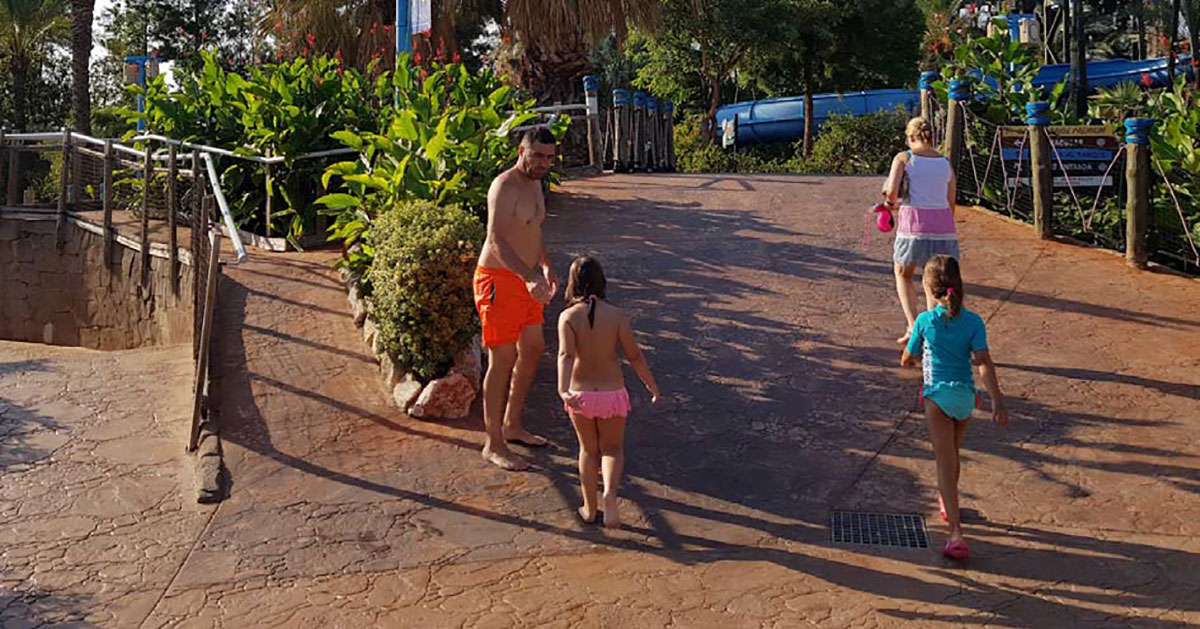
Ceramic
The disadvantage of this paving is that it tends to break due to imperfections in the base or the passage of vehicles. It is also difficult to find suitable anti-slip models. All this makes it more recommendable for interiors, in the buildings of the different services of the water parks.
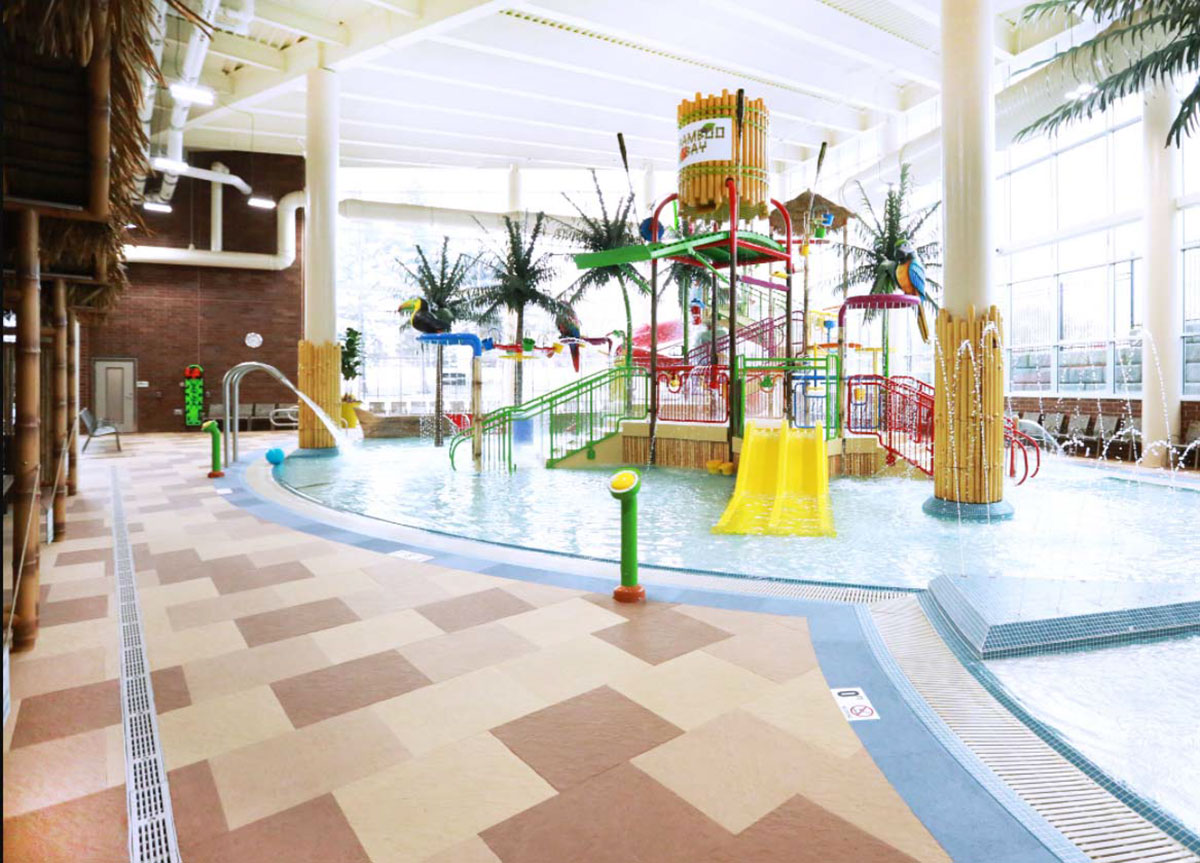
WPC (Wood Plastic Composite)
With a higher price, this flooring is usually only used on terraces because of its light weight, and because it allows water to filter into the slopes below. It is often a flooring that must be imported for installation in a water park.
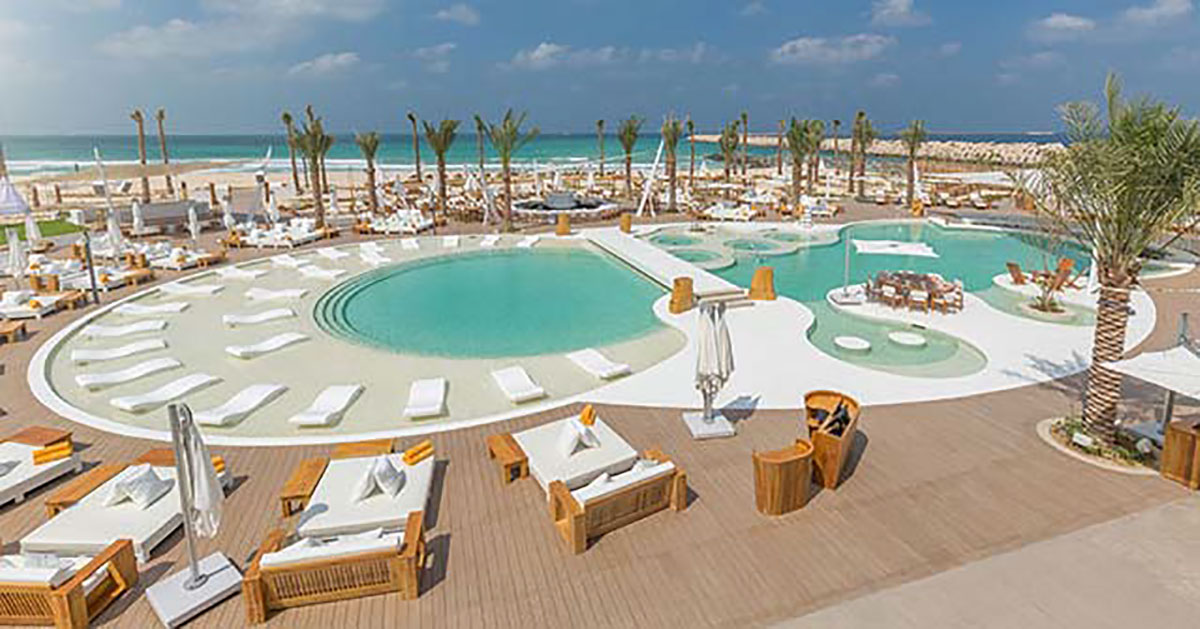
By Miquel Solís, senior architect in the Architecture Department of Amusement Logic


